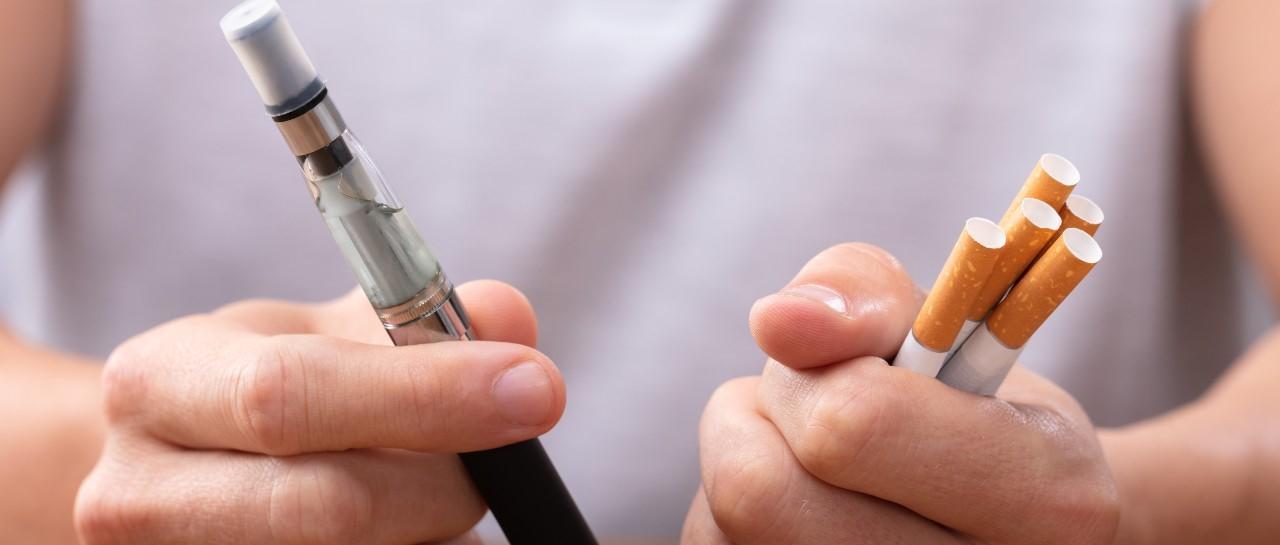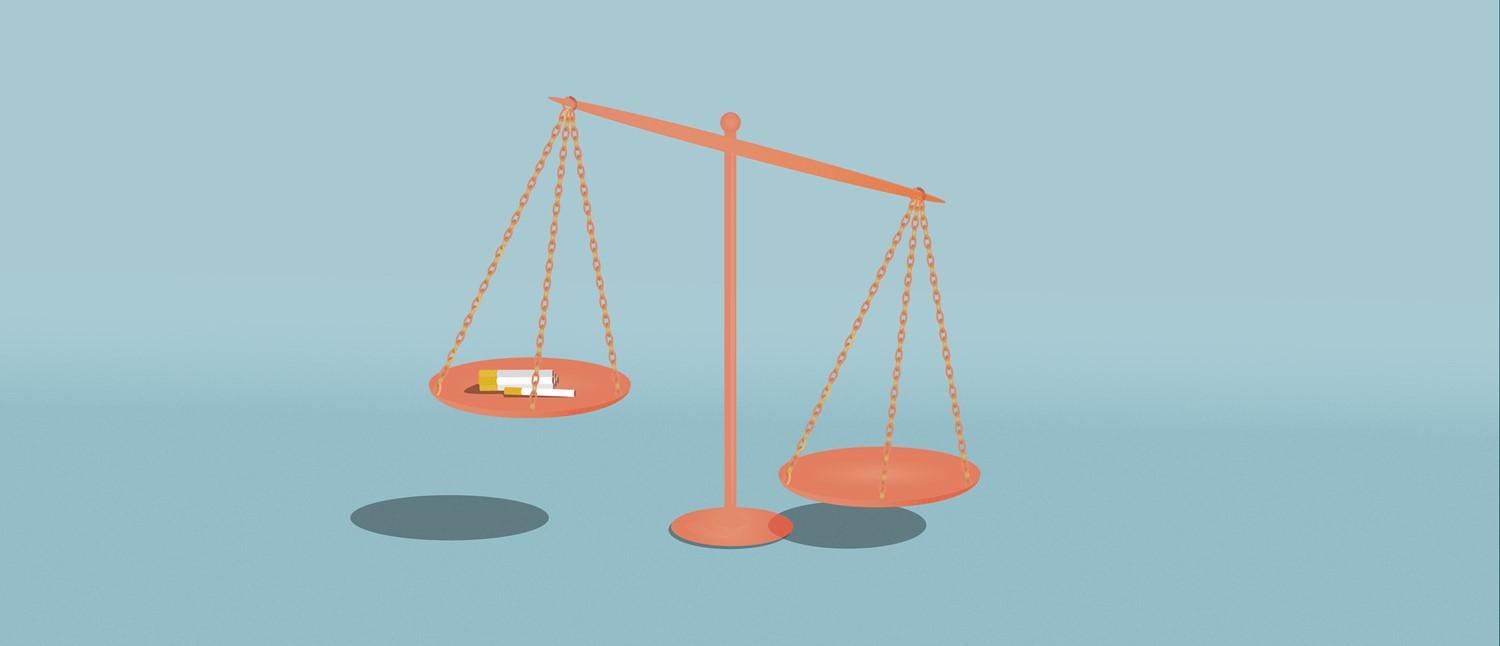
Will making e-cigarettes available on prescription encourage teenagers to smoke?
Peer reviewed by Dr Sarah Jarvis MBE, FRCGPLast updated by Emily Jane BashforthLast updated 26 Nov 2021
Meets Patient’s editorial guidelines
- DownloadDownload
- Share
- Language
- Discussion
The government is hoping to make England smoke-free by 2030. They're implementing various strategies, including the possibility of offering e-cigarettes on prescription. However, there are concerns that e-cigarettes look 'trendy', and therefore encourage teenagers to take up smoking. Is this true, or are prescribed e-cigarettes a step in the right direction?
In this article:
The terms 'vaping' and e-cigarettes are sometimes used interchangeably and sometimes used to describe different products. Technically, e-cigarettes are devices that look similar to traditional cigarettes. E-cigarettes are single devices that are used until they run out and are then thrown away. Vape pens, by contrast, have both a refillable tank and a rechargeable battery.
Public Health England uses the term 'vaping products' to describe e-cigarettes and refill containers and e-liquids.
Continue reading below
What are the benefits of e-cigarettes?
Vaping products are considered to be the most effective aid for quitting smoking. Compared to other nicotine replacement methods, they have the highest quit success rates, which were between 59.7-74% in 2019 and 2020. Figures from Action on Smoking and Health (ASH) suggest that the number of vapers in the UK has reached 3.6 million, a figure that has soared rapidly over the past decade.
Vaping products contain no tobacco
Jane Buxton manages an e-cigarette company, and she explains how vaping works.
"Instead of burning tobacco to deliver nicotine, vaping devices heat up a coil to vaporise nicotine or nicotine-free e-liquids, which are available in an array of universal flavours."
While many e-cigarettes contain nicotine - the addictive chemical in cigarettes - they do not contain tobacco, which is what makes cigarettes harmful.
"Unlike cigarettes, e-cigarettes do not contain thousands of other harmful chemicals, nor do they have an unpleasant taste, smell or residue," says Buxton.
Vaping is considered to be less harmful
An independent review published by Public Health England found e-cigarettes to be 95% less harmful than cigarettes, with no confirmed evidence suggesting that e-cigarettes can harm those around you. However, Dr Verity Biggs says there has been guidance released by the Medicines and Healthcare products Regulatory Agency (MHRA) regarding e-cigarette or vaping-associated lung injury (EVALI).
Vaping can be considered enjoyable
Since vapers do not need to worry about their bodies being harmed as though they were smoking, many actually enjoy the experience of vaping. There are thousands of e-liquid flavours and devices with varying functions for a tailored experience, which makes them more desirable for some.
Vaping is less costly
With the cheapest packet of cigarettes costing £9.73 following the chancellor's 2021 budget, vaping can be a cheaper alternative. Those who choose to vape can save a significant amount of money, with the average monetary value of smoking being a whopping £3,285 per year.
Does vaping lure teens towards smoking?
There is speculation around whether vaping entices teens and youths to smoke. Perhaps they think it looks 'cool', maybe they want to fit in with friends, or perhaps they're just curious.
"Studies have claimed that young people who vape are almost five times more likely to become smokers, an alarming fact when the fundamental purpose of e-cigarettes is to provide smokers with a scientifically supported method to quit," says Buxton.
Nicotine in any form is highly addictive, so there are worries that even just trying an e-cigarette will make a youngster want more. There is evidence to suggest that young people who vape are more likely to go on to use illicit drugs and tobacco products, such as cigarettes.
Additionally, in the age of social media, young people are more exposed to both vaping and smoking, as they see their favourite celebrities and influencers promoting them.
Dr Biggs says: "It has been seen that some younger people have started vaping when they have never previously used tobacco. We know that e-liquids come in lots of different flavours, which might be enticing. There has always been a pressure for people to fit in with their peers, so this is no different to that. Teenagers are more likely to try it just for that reason only, with some studies showing that only 1% thought they would because it was cool. The actual regular use of e-cigarettes remains low."
Continue reading below
But could it be a misconception that e-cigarettes tempt teenagers to smoke?
While the concerns about vaping being a gateway to smoking are understandable, many teens have little interest in vaping. It is thought that e-cigarettes being easier to access makes youngsters more intrigued to get hold of them, but Action on Smoking and Health says over 77% of 11 to 17-year-olds have actually never tried e-cigerettes. When research was conducted, 10% of participants were not aware of vaping products.
Children under 16 are least likely to try vaping, with findings showing only 6.5% of 11 to 15-year-olds have tried vaping, compared to 23.2% of 16 to 17-year-olds. Just under a third of 18-year-olds report trying an e-cigarette.
Use of vaping products remains largely confined to current or former smokers. Out of research conducted, only one single person who had never smoked reported vaping daily. Even the stats of those who do use e-cigarettes (0.2% vape more than once a week) are very low and represent small numbers of individuals.
Dr Biggs says you are probably more likely to see adults using them than teenagers.
How can e-cigarettes harm teenagers?
With research still ongoing, vaping is by no means risk-free. Teens who do choose to vape with nicotine e-liquids are at risk of harming their brain development, impacting their memory and learning in the process.
With nicotine being an addictive substance, young people who smoke or vape are thought to be more likely to develop low self-esteem, anxiety and depression.
"Nicotine can also contain other harmful ingredients, particles, and flavours and organise compounds and metals, which are all inhaled into the lungs. This can lead to respiratory symptoms such as coughing, shortness or breath and chest pains. Changes can be seen on X-rays or CT scans and these changes are normally lifelong," says Dr Biggs.
It is important to offer education to young people on the dangers of smoking, while implementing strong regulations that prevent vaping products from being accessible.
Continue reading below
Will prescribing e-cigarettes help tackle smoking rates?
"Studies have shown that the use of e-cigarettes is more effective than other methods of tackling smoking, such as nicotine replacement therapies (NRTs). More studies will need to be conducted before they are made available on prescription, and treatment will need to be standardised across the NHS," says Dr Biggs.
There is currently a range of NRT methods available on the NHS, including:
Skin patches.
Nasal and mouth sprays.
Gum.
Tablets.
Lozenges.
Oral strips.
Inhalators.
These aim to help smokers gradually eliminate their nicotine intake, but aren't necessarily designed to act as a long-term solution.
Therefore, there is potential for prescribed e-cigarettes to be more successful in reducing smoking rates. However, guidelines will have to be set and products must be regulated and approved.
Patient picks for Smoking and vaping

Healthy living
How to quit smoking without gaining weight
It's a common perception that stopping smoking leads to weight gain. As the thinking goes, while your heart and lungs may benefit from the change, your waistline probably won't. Unsurprisingly, many smokers worry about this eventuality, and may even be deterred from quitting.
by Abi Millar

Healthy living
What to do if you relapse after quitting smoking
Don't give up! That's the message if you've relapsed after quitting smoking. Smoking is a hard habit to kick so don't be hard on yourself if you're finding it tough. There are lots of techniques which can help you to get back on track and keep it up long-term.
by Andrea Downey
Continue reading below
Article history
The information on this page is peer reviewed by qualified clinicians.
26 Nov 2021 | Latest version
26 Nov 2021 | Originally published

Ask, share, connect.
Browse discussions, ask questions, and share experiences across hundreds of health topics.

Feeling unwell?
Assess your symptoms online for free
Sign up to the Patient newsletter
Your weekly dose of clear, trustworthy health advice - written to help you feel informed, confident and in control.
By subscribing you accept our Privacy Policy. You can unsubscribe at any time. We never sell your data.